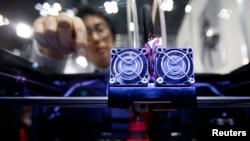Consider the achievements humanity has made in the past century. It is possible for someone who has reached age 100 today to have seen only animal powered transportation and farming to witnessing multiple landings on Mars. Technological advancement from the light bulb to smartphones and super computers is nothing short of staggering. With a few decades behind us to marvel at these changes, the disparity of life in many parts of the world has also grown glaringly obvious. Millions of people live in conditions that have changed very little from their ancestors. As the gap widens, so does the prospect for greater unrest and conflict.
So what could change social global dynamics over the next century? I recently read an interesting outlook for 3-D printing, an emerging technology that allows a computer driven printer to create three dimensional objects. The 3-D printing market, according to some industry observers, is expected to grow by 5000% in just the next five years. Consider the possibilities as the ability to create objects becomes more accessible to those in the scientific and medical fields, not to mention the average person.
3-D printing is already going well beyond being a new way to manufacture durable goods. The push is being made to print replacement human organs and food. The implications for the developing world is staggering in much the same way as cell phones revolutionized communication in areas of Africa and Asia that completely skipped landline technology.
The next century has the potential to dramatically foster longer lives and provide the food to sustain them, as long as the technology is used for positive advances. It appears that responsibility will be increasingly in the hands of ordinary individuals who will have more power to do extraordinary things.











